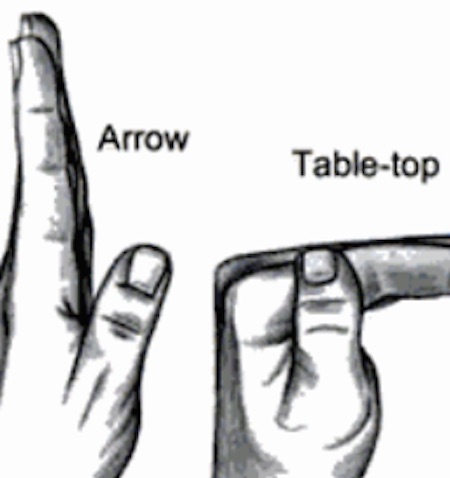Hand Surgeons Provide Tips for Power Saw Safety
Rosemont, IL; May 4, 2005— The American Society for Surgery of the Hand (ASSH) recommends that individuals take the proper precautions to prevent hand-related injuries while tending to Spring projects. Each year, thousands of people suffer maiming or amputations of their fingers or hands due to improper handling of power saws.
In a 2001 study, the Consumer Product Safety Commission (CPSC) found that over 50,000 people were treated in U.S. hospital emergency rooms for injuries associated with table saws, band saws, miter saws, or redial arm saws in the calendar year. Contact with the saw blade was the major hazard to power saw operators, followed by being hit by stock or cutting material. An injury sustained from a power saw could quickly and suddenly have devastating consequences involving severe lacerations and fractures. Nerve, tendon, vascular injury and amputation are possible as well. Fingertip injuries are the most common with the thumb being the most commonly injured digit. It has been determined that a circular table saw can sever a human forearm 6 centimeters in diameter in just 40 - 60 milliseconds depending upon the feeding power of the saw.
”Power saw injuries are usually very serious, often requiring delicate surgery followed by weeks or even months of rehabilitation,” said Jeffrey C. Wint, MD of the American Society for Surgery of the Hand. “"Even with treatment an injury may result in permanent changes to the function of the injured hand and upper extremity."
An inexperienced operator is more likely to be injured with a power saw than with other tools. These injuries are likely to be more severe than with other tool injuries. While tool design may be responsible for some power saw injuries a primary source of injury comes from failure to properly use the equipment and exercise sound safety principles.
To prevent hand injuries, the ASSH suggests the following safety tips when using a power saw:
• Never look away from your work.
• Never use your hands to clear the scraps from a sawing worktable, instead, use a long stick.
• Do not wear loose clothing or jewelry around the wrists.
• Keep your finger off the trigger when carrying a portable power saw.
• Use the correct blade for the application.
• Use sharp blades. Dull blades cause binding, stalling and possible kickback.
• When starting, let the saw reach full speed before cutting and support the work firmly so it will not shift.
• If the saw stalls, switch off the power and unplug the tool before trying to restart it.
• When working with metal, secure the metal materials with clamps or in a machinist’s vise to keep it from moving.
• Check for proper blade guard operation before each cut.
• When starting or stopping the saw, make sure the work is not touching the blade.
• Lower a table saw blade below the table top when finished.
• Keep a clear head, concentrate, and DO NOT DRINK ALCOHOL before using a power saw!
Whether removing tree branches, building a deck or working on another Spring project, use caution when operating a power saw. If you are injured seek prompt medical attention. Delay in treatment can lead to a higher risk of infection or tissue loss. The damage done to a finger, hand or any site often exceeds what may be initially apparent due to the force of these types of injuries. Make the safety tips presented here common knowledge and practice in your home and workplace. Know your equipment and its limits
taken from contents of ASSH press release of 5/4/05 at www.assh.org for www.handctr.com and www.safehand.org


 copy.jpg)
